September fourteenth. Summer was over and Martha’s Vineyard had already begun its annual downshift into fall. Children were back in school, the frenzy of August was a fast-fading memory and Islanders were settling in to the rhythms and routines of year-round life that prevail for 10 months of the year. Warm days, cool nights. The derby was about to begin, and fishermen were hitting the bonito and albies that run thick in the clear waters around the Island.
Then the call came.
By now the story of the day two planeloads carrying 50 Venezuelan migrants landed on Martha’s Vineyard has been told and retold. It’s made national and international headlines and has been the subject of lengthy retrospectives. It’s sparked bitter backlash and lawsuits, and has served to renew debate about the complicated, divisive and politically fraught issue of immigration.
But behind that story lies another — quieter, but also intensely human. It’s the story of a less widely known Martha’s Vineyard, a community that could mobilize on a moment’s notice and rally to help others, even when thrust into the harsh glare of the national spotlight. Most of all, it’s the story of a remarkable network of humanitarian efforts, both formal and informal, that exists here.
“The people here are very good people,” said Élio, one of the migrants, after the ordeal began. “It was a nice surprise. You don’t normally see that, as an immigrant. But everyone was so helpful and kind. I don’t know what’s going to happen but everything here was good. It was all good.”
The Island’s response to a political stunt spearheaded by the governor of Florida was the capstone in a year on the Vineyard that tested Islanders in unexpected ways.
Two other dramatic events — the tragic drowning of two brothers at the big bridge in August and the brazen armed robbery of a bank in November — brought unusual attention to the Island better known as a peaceful summer resort.
For their own part, Islanders battled winter storms, raised up docks and rebuilt beaches in the face of climate change. For yet another year — by now weary from it all — they wrestled with Covid, putting on masks when cases surged, rolling up their sleeves for the first vaccinations. With determination, they turned their attention to the growing problems of homelessness, food insecurity and learning lags in public schools. With fresh resolve, they dug in to address the deepening Island housing crisis.
They fought fires — too many fires, it seemed — and reckoned with their own history of racism, sometimes in the unlikeliest places. They went to court in an attempt to resolve their differences. They mourned the loss of community members, both from natural causes and tragic accidents. When the war in Ukraine cast a dark shadow across the world, they showed their solidarity with Ukrainian people.
There were high points too. The Island basked in a glorious summer and fall, celebrating a return to normalcy with parades and jubilees, fishing tournaments large and small, sparkling beach days and ferries jammed to the gunwales. Downtown business owners threw open their doors to welcome it all.
“Kind of feeling like the floodgates have opened up. There’s a lot of good energy going around,” Oak Bluffs Association executive director Christine Todd told the Gazette as the busy season got under on Memorial Day weekend.
The year began as it nearly always does on the Island: beneath of blanket of deep winter quiet. Ponds froze over as temperatures plunged, delighting skaters. Backyard birders kept their feeders full. The landscape was starkly beautiful, beaches swept clean by storm tides.
The pandemic was ever present, with the latest Omicron variant fueling a surge in cases and prompting public advisories by public health officials. Free rapid tests were the new hot commodity, and Islanders lined up at town halls to collect their kits. At the Martha’s Vineyard Hospital — the sole Island clinic for vaccines — people queued up to get their shots.
Through winter and spring, Covid-19 infection rates would wax and wane, mirroring trends around the globe.
A turning point came in March when TestMV, the free Island testing site for Covid-19, finally folded its tents, ending an extraordinary run that had helped steer the Island through the turbulent, uncharted waters of the past two years.
“It has been a wild ride,” reflected the site director Declan McBride, who was by then a familiar figure who had kept things running smoothly (even when they weren’t).
“It’s like the Garth Brooks song Learning to Live Again,” said Donna McElroy, a nurse and leading volunteer at the test site.
And it was true. A new political season was under way and Island towns prepared for annual town meetings in the usual way. But amid planning for new fire trucks and wastewater plant expansions, a single issue stood out. With concern about the shortage of affordable housing now an alarm bell sounding from Chappaquiddick to Aquinnah, a coalition that had formed to create a Martha’s Vineyard Housing Bank got to work, drafting a lengthy article to take to every town meeting in the spring.
Modeled after the Martha’s Vineyard Land Bank, the housing bank proposal aims to establish a fund using a transfer fee on real transactions. The draft article — a home rule petition to send to the state legislature — was long and dense, and Island officials debated the details, sometimes heatedly. The housing bank question would later be adopted by every Island town.
It was only a first step. The proposal is now in front of the Massachusetts state legislature, where it faces a long journey amid other similar proposals from around the commonwealth.
“Sometimes you file amendments to start a conversation or to get attention on an issue. We’ve got a lot of attention on this issue,” Cape and Islands state Sen. Julian Cyr told the Gazette in July.
The flip side of the housing crisis was of course the Island real estate market. Fueled by a pandemic buying frenzy that stunned even the most seasoned industry experts, the property sales market had shattered records for two straight years. Inventory shriveled and sale prices rocketed skyward. But by mid-summer this year, with a global recession becoming a reality, the market was showing signs of cooling.
“It’s a light decline,” Martha’s Vineyard Land Bank executive director James Lengyel told the Gazette, predicting a commensurate decline in revenues by year-end. His forecast proved true.
Meanwhile, the summer rental market was experiencing its own gold rush. A new, hefty short-term rental tax sent millions flowing into town coffers around the Island. Halfway through the year, more than 2,650 properties had registered as short-term rentals, generating $16.5 million for towns.
How will the money be used? With affordable housing stock — crucially, rental housing — at its lowest ebb in recent memory, debate is expected to continue in the year ahead.
In late January a powerful northeaster blew in, packing gale-force winds and blizzard conditions, dropping a foot of snow in some places. Power was knocked out in many areas; all of Chappaquiddick was in a blackout for 24 hours.
The schooner Tangier went aground in Vineyard Haven Harbor in the storm, but was later safely pulled from the rocks by mariners and the Tisbury harbor master.
Emergency responders helped people shovel out. All credited Eversource and highway crews for their work, calling it a good practice run as the Island honed its preparedness for weather emergencies.
“It dusted off the cobwebs,” Edgartown town administrator James Hagerty told the Gazette.
Preparedness was just one theme in a year that saw planning for the effects of climate change gain momentum.
Projects to hedge against rising seas included the rebuilding and raising of Memorial Wharf in Edgartown. A dune restoration project at Norton Point near South Beach in Edgartown was hailed as an innovative public-private partnership. But near the end of the year, completion of the work became a question mark after the Trustees of Reservations — which had been a key partner in the project along with the town of Edgartown and the state — opted to not seek renewal of a contract with the county for the management of Norton Point Beach.
It was another bump in what had been a rocky year for the Trustees, a statewide land trust that has played a leading role in conservation on the Island for more than half a century. Early in the summer the Trustees unveiled a new draft management plan for a 12-mile stretch of barrier beach running from Norton Point to Cape Pogue. Three years in the making, the plan was grounded in broad scientific study around the effects of climate change on beaches and tidelands.
But the plan sparked immediate, widespread backlash and was quickly shelved by Trustees president John Judge, who vowed to return to the drawing board.
“We’re at the intersection of where recreation meets resiliency . . . they need to be connected with the urgency around stewardship,” he told the Gazette.
Four months later Mr. Judge resigned, citing differences in vision with the organization’s board.
On the water, climate change affected many species important to the Vineyard — including the storied, migratory striped bass.
The stripers will survive, Benjamin Gahagan, a diadromous fish biologist with the Massachusetts Division of Marine Fisheries, told the Gazette for a special report that ran during climate action week in May.
“It’s just a question of are they going to be this cornerstone of our cultural and recreational experience on the East Coast. That’s going to be the question,” he said.
On Feb. 8 the Martha’s Vineyard Hospital reported its first death from coronavirus. Albert Hutchinson, 78, was a resident of Chilmark. For the Island it was a stark reminder that the pandemic was not over, even as case counts fell.
There were other tragedies and loss, including the death of Riley Ignacio-Cameron of Aquinnah in an off-Island car accident on Dec. 10 that also claimed the lives of three of his classmates at Maine Maritime Academy.
A historic home on outer Main street Vineyard Haven was destroyed by fire in early February, drawing an Islandwide response from firefighters. No people were in the house at the time, but two dogs died in the blaze.
A month later Island firefighters were tested again when the Ocean View Restaurant in Oak Bluffs went up in flames. The iconic family-owned eatery was closed at the time. The owners vowed to rebuild, but by year-end there had been no news about future plans.
The Island lost more than one community member who had defined important eras.
Everett Poole, 91, had personified a way of life on the Menemsha waterfront and presided as Chilmark town moderator for 45 years. David McCullough, 89, was a towering force in American literature and biography and longtime resident of West Tisbury. Nancy Kohlberg, 92, who with her husband Jerry acted to preserve the Vineyard Gazette, had also been a force for a variety of other causes from sustainable agriculture to environmental protection.
In a year when Islanders could safely gather again, there were celebrations of art, culture and history. The Fourth of July parade — the best little parade in America — returned to Main street Edgartown. High school graduation returned to the historic Tabernacle in Oak Bluffs.
The first Juneteenth Jubilee saw a sold-out weekend of events including musical performances at the Tabernacle and educational programs on slavery and emancipation.
“We are continuing a legacy of a community that has been doing this since it began,” said organizer Kahina Van Dyke.
In late August, the Beach Road music festival drew thousands to the three-day event in Veterans Memorial Park in Vineyard Haven. While concert-goers enthused, some neighbors lodged a litany of complaints with town leaders about noise levels and traffic congestion.
Earlier in August, a popular summer ritual claimed the lives of two brothers who drowned after jumping late at night off the big bridge on Beach Road. Tavaris Bulgin, 26, and Tavaughn Bulgin, 21, were recovered from Sengekontacket Pond following a multi-day search by state police, fire and Coast Guard. Both Jamaican natives, the brothers had been employed at Noman’s restaurant. From the Vineyard to Jamaica and back, people rallied to support the families after the tragedy.
In November, Islanders were rocked by a startling crime — the holdup of a small branch of the Rockland Trust Bank in Vineyard Haven by masked and armed robbers. On an Island where violent crime is a rarity, residents were transfixed by reports that three men had tied up bank personnel and fled in a stolen car with what was later revealed to be about $40,000 in cash. An intensive police investigation followed and remains ongoing; so far three men have been arrested and charged in connection with the heist.
All year long there were increasing signs that the Island was running out of room and nearing its limits for growth and development. Pond pollution was on the rise. Wastewater plants in Edgartown, Oak Bluffs and Vineyard Haven were at or near capacity. Still, there was little consensus around where to draw the line, or if there even was a line. More hard science was needed, but lacking. The Martha’s Vineyard Commission had announced in 2021 that it would partner with the U.S. Army Corps of Engineers to conduct a carrying capacity study for the two Islands, but the project appeared to be stalled.
As generations shifted and Island culture changed, regional institutions like the commission and the Steamship Authority came under new pressures. At the MVC, the work load exploded: development reviews were at an all-time high, and an unprecedented number of requests poured in for demolitions of single family homes. Litigation too was at an all-time high for the nearly 50-year-old regional planning agency, with court appeals piling up alongside soaring legal bills. As a result, the commission was forced to raise its assessments for the six Island towns for the coming year — an unpopular move.
At times the challenges appeared daunting. Food and housing insecurity grew to a scale never seen before on the Vineyard. A network of nonprofits working to address the problems, including Island Grown Initiative, the Island Food Pantry and Harbor Homes, ramped up efforts on a variety of fronts. As the year drew to a close, they continued to make remarkable progress.
Because when it comes to compassion for the human condition, on Martha’s Vineyard there is infinite capacity.
Never was this more evident than on Sept. 14, when a staggering array of people across public and private sectors too numerous to list in this space came together to provide shelter, food, clothing and other support to the group of 50 migrants who had landed at the Martha’s Vineyard Airport without warning.
“All the helpers from across the Vineyard were ready on a dime,” recalled the Rev. Cathlin Baker in a later commentary for the Gazette. “It may take us awhile to process what just happened here. But let me tell you, this Island community is renewed and ready. Ready to help our new Venezuelan friends get settled. Ready to attend to any other migrant groups that are sent here. Ready to ask our present immigrant neighbors about their stories — their journeys and their needs.
“Ready to stand in solidarity with other communities who are on the front lines of the migrant crisis or who receive unexpected migrant guests. Ready to be agents of love, compassion and justice in a broken world.”


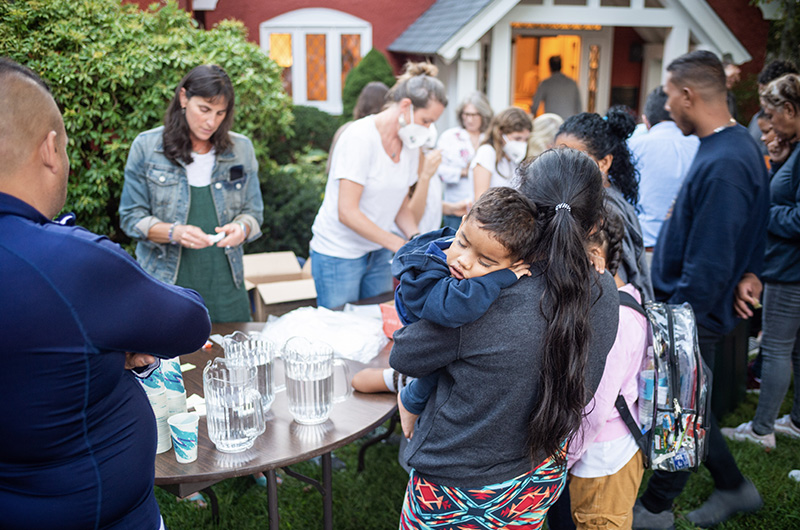
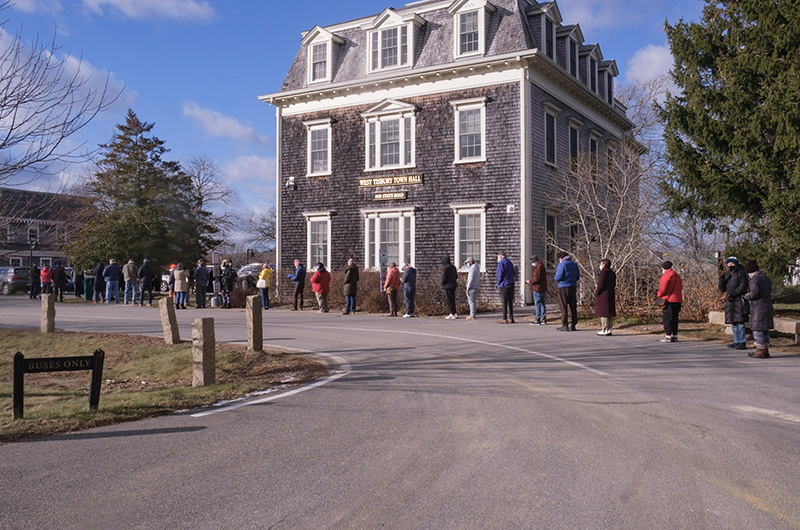



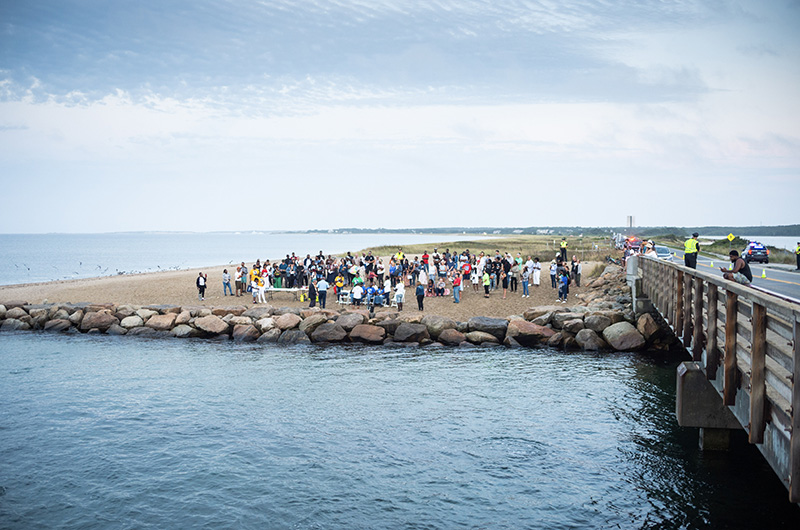

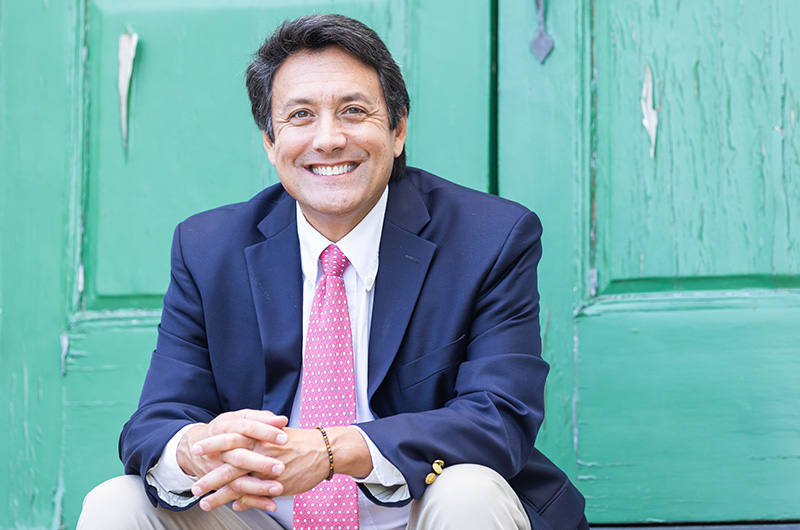
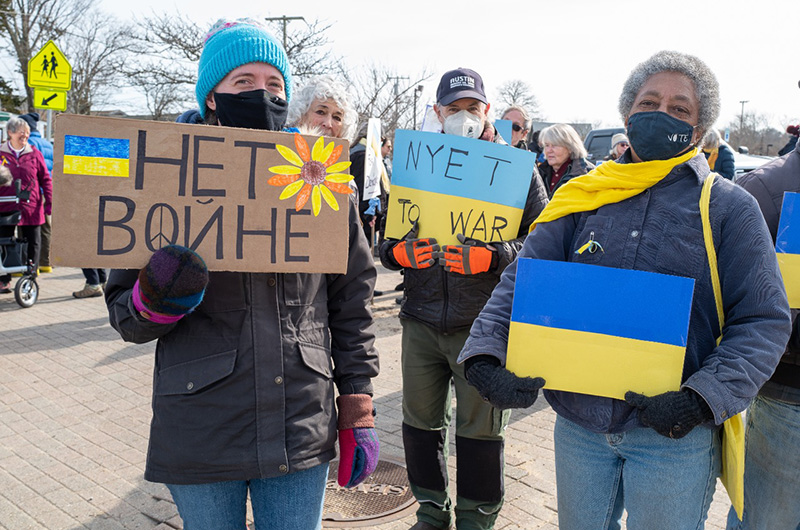





Comments (3)
Comments
Comment policy »